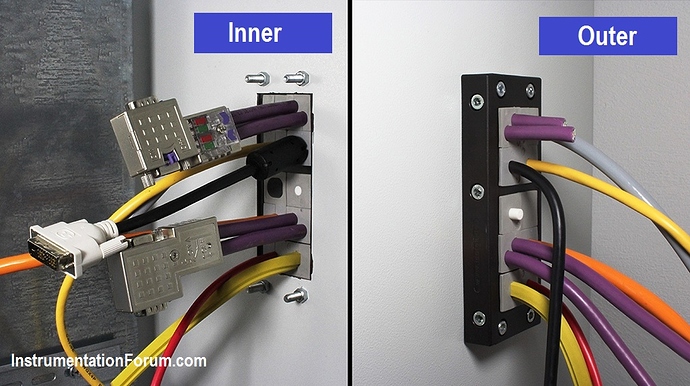Cable entry systems are used for routing electrical cables, corrugated conduits or pneumatic and hydraulic hoses into switch cabinets, electrical enclosures, control panels and machines or in large heavy-duty vehicles, rolling stock and ships. Possible requirements can be high ingress protection rates or integrated strain relief.
It is being differentiated between entry systems for routeing standard cables (without connectors) with a high packing density and split cable entry systems which enable routeing of pre-terminated cables (with connectors) or complete cable harnesses.
Cable entry systems for cables without connectors
For routing of standard cables and other electrical, pneumatic or hydraulic lines through machine, panel or enclosure walls, cable glands, self-sealing grommets or gland plates can be used to seal the cut-outs required for passing the cables through. This protects the inside of an enclosure or machine from dirt, dust or liquids. Cable glands and self-sealing grommets are usually designed for entering single or just a few cables. By utilising a gland plate, many cables with different diameters can be routed. Depending on the type, very high cable densities or ingress protection classes up to IP66/IP68 (according to IEC 60529) can be achieved.
Split cable entry systems for cables with connectors
For routing cables which are already assembled with connectors, split cable entry systems have been developed. The divisibility of these systems provides two advantages. The warranty on pre-terminated cables remains since the connectors don’t have to be cut and soldered again after entering the cables.
The other advantage is that assembly can be done subsequently because the split cable entries are usually built around the existing lines. Most split cable entries consist of a split hard frame, made of plastic or sometimes aluminium (e.g. utilised in food industry) and one or several split sealing grommets, usually made of elastomer.
The grommet matching the cable diameter is placed around the cable and fixed inside the cable entry frame. Thus allowing strain relief for the cables (in some cases according to EN 50262) as well as ingress protection of up to IP65/IP66.


